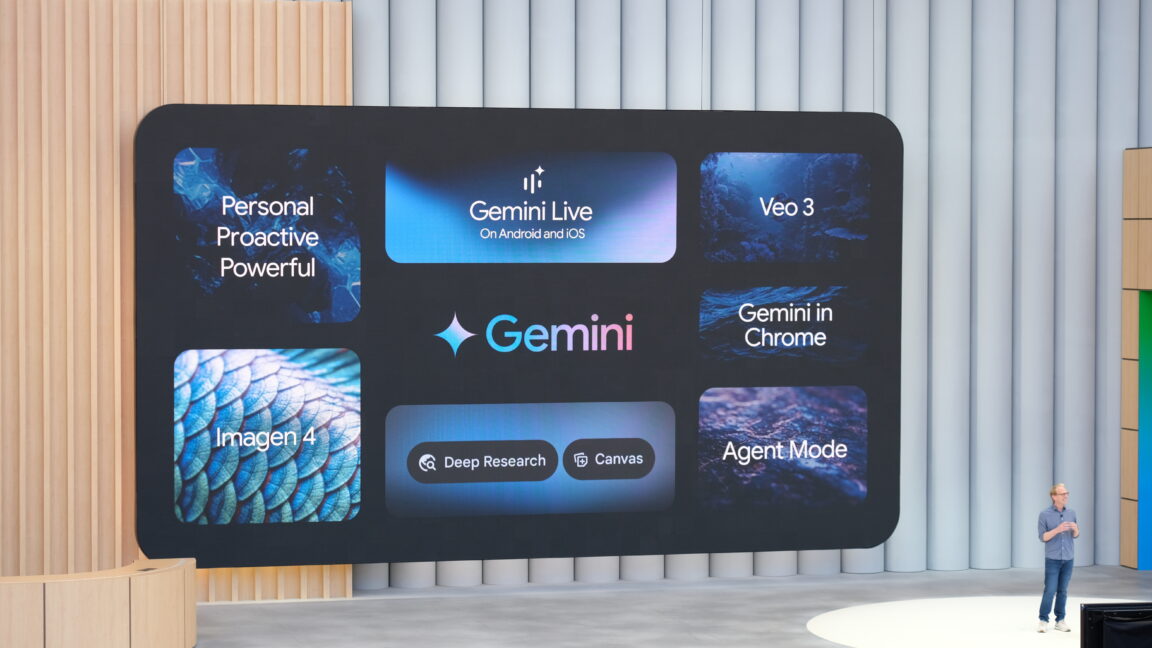This Billionaire Immigrant Is Racing Elon Musk To Connect Your Phone From Space
Abel Avellan is taking on SpaceX and Jeff Bezos’ Project Kuiper in the battle to provide broadband satellite internet directly to your smartphone.
Last September, a crowd of seasoned spectators gathered at Cape Canaveral, Florida, to watch as SpaceX’s Falcon 9 rocket took flight for the 373rd time. But it wasn’t carrying yet another of Elon Musk’s Starlink satellites to join the 7,100-plus he has already circling Earth. Onboard instead were five satellites from AST SpaceMobile, a tiny Starlink rival that SpaceX has derided as a “meme stock” in regulatory filings with the federal government. Each was equipped with a 700-square-foot antenna that would unfold in orbit, an early step in establishing a network AST hopes will someday best the incumbent mocking it.
The size of these antennas—and the even larger 2,400-square-foot version that will succeed them—are key to CEO and founder Abel Avellan’s plan to win a new market: satellite internet beamed directly to your phone. In contrast to SpaceX, which uses thousands of satellites to connect residences, businesses, vehicles and even the White House to the internet, AST’s super-large antennas should give it global coverage with just 90 satellites. The company plans to launch 60 into orbit by the end of 2026.
Jamel Toppin for Forbes
The goal is to keep cellphones connected when out of range of a tower. You’d be able to make calls even when hiking in a remote area or from a boat miles offshore. Until recently, that required expensive satellite phones with special hardware. “Our vision is to provide connectivity without disadvantage to wherever people are located,” says Avellan, 54.
This isn’t Starlink’s main business: Its billion in revenue largely comes from providing internet to fixed-base stations attached to homes and businesses, not mobile phones. Nor is it the vision of Jeff Bezos’ Project Kuiper, a direct Starlink competitor, which launched the first 27 of a planned 3,200-plus satellites in late April. But Starlink isn’t totally ignoring the phone business. It’s currently in beta testing with T-Mobile to let users text on their phones via Starlink when they don’t have any bars, giving it an early lead over AST. It also has thousands of satellites, to AST’s five, and Musk’s insider status with the Trump administration could prove important in the heavily regulated telecom business. Starlink’s staggering billion valuation dwarfs Midland, Texas–based AST’s market capof around billion.
Still, AST has a shot at the emerging market for a satellite-based mobile cell plan, with a potentially substantial payoff. The big opportunity is not off-grid connectivity for Europeans and North Americans but providing internet to the more than 2.6 billion people, largely in the developing world, who struggle to get online at all. Most of them can’t afford Starlink. A basic base station starts at ; then it’s around per month for residential Wi-Fi. AST’s pricing is still largely theoretical, but the startup hopes it can deliver for just a few extra dollars a month on a cellphone bill. That’s a compelling proposition.
When it comes to broadband, “the cheapest and most efficient way is through your phone,” Avellan says. Skipping out on building new cell towers entirely could mean major cost savings for the telecoms companies as well, if they can offer satellite internet in markets that don’t yet justify that investment. Deutsche Bankestimates that the company’s revenues could top million in 2026 once its commercial service is up and running, and surpass billion by 2030—with far less capital expenditure than Starlink will need to keep launching thousands of satellites.
The big obstacle for both companies is the basic physics of satellite communication: namely, that you need a direct line of sight from a satellite to your phone to get a signal. Starlink, Project Kuiper and multiple Chinese firms plan to tackle this by flooding the zone with thousands of small, cheap satellites in low Earth orbit, which hop signals between them to maintain steady connections with ground-based dishes. The antenna in your phone is a lot smaller, making it harder to get bandwidth to do more than text.
But AST’s satellites are outfitted with antennas at least 50 times the size of Starlink’s. It’s a tricky feat of engineering—the centimeters-thick antennas require assembly in clean rooms to be securely packed into satellites at launch; then they’re carefully unfolded again in orbit. It’s much more complicated than a Starlink satellite, and each AST satellite costs about million compared to around million to build each Starlink bird. But the result is true broadband connectivity. AST’s five satellites have successfully made video calls with phones on Verizon, Vodafone, Rakuten and AT&T networks. AST’s have a longer lifespan, too, requiring replacement every 10 years compared to five to seven years for Starlink.
AST’s big antennas make broadband-to-cellphone connections easier to pull off, says John Baras, a University of Maryland aerospace engineering professor, because they cover a much larger area and are designed to deliver a signal to devices in motion. Starlink has a bigger challenge making its system work for phones, he says, because it was envisioned as a way to deliver internet to fixed stations on the ground—not to mobile phones that by definition move around. “Starlink is going to have problems,” he says. SpaceX did not respond to a comment request.
JR Wilson, VP of towers and roaming at AT&T, a major AST investor, compares the tech race between Starlink and AST to the home-video race of the 1980s. “Beta came out first, but it didn’t have some of the same qualities as VHS,” he explained, recalling Sony’s ill-starred format which, despite delivering a better picture, failed because of its high price and short recording times. AT&T plans to start offering satellite connectivity using AST’s service once it has more satellites in orbit next year.
AST currently has deals with dozens of other telecom providers around the world, including Vodafone, Rakuten and Verizon, offering potential access to around 3 billion subscribers. Partnering with big telecoms offers loads of advantages, says Mike Crawford, an analyst at Los Angeles–based B. Riley Securities. By avoiding the home satellite internet market that Starlink dominates, AST doesn’t have to spend money to attract subscribers or build costly ground infrastructure—its partners have already done that. Plus, it avoids going head-to-head with giant legacy telecoms.
Avellan knows the ins and outs of the industry. Born in Venezuela, he studied engineering before starting his career at the Swedish telecom giant Ericsson. He founded his first company, Emerging Markets Communications, “with and a pregnant wife” in 2000, he says, to provide satellite communication services to Africa and the Middle East, as well as cruise and cargo ships. He sold it to satellite company Global Eagle in 2016 for million and used some of the proceeds to found AST the following year.
After launching its first demonstration satellite in 2019, AST raised million from Vodafone, Rakuten, AT&T and VC shops like London-based Shift Ventures. In 2021, it went public through a SPAC backed by private equity firm New Providence, raising an additional million. The company’s stock has more than doubled since then, making Avellan, who owns about 25% of it, worth some billion. In March, AST and Vodafone announced plans for a joint venture spin-out company to offer AST’s satellite connectivity to mobile operators in Europe and Africa.PATRICK WELSH FOR FORBES
How To Play It
By John Buckingham
For a more grounded play on soaring demand for connectivity, wireless communications and broadcast tower REIT American Tower should continue to benefit from mobile data proliferation and 5G deployments, while an expanding data center segment positions it to profit from the rise of hybrid IT and AI workloads. Meanwhile, shareholders are rewarded with a 3.3% dividend yield to go along with handsome capital appreciation potential from a conservative “picks-and-shovels” terrestrial player in the tech gold rush. Moody’s just awarded the company’s strong balance sheet, citing AMT’s leading position in the global wireless infrastructure market, predictable revenue and income, consistently solid fixed charge coverage and excellent liquidity.
John Buckingham is a principal of AFAM Capital and editor of The Prudent Speculator.
These partnerships also unlock the parts of the radio spectrum that make communications between satellites and phones possible, which are primarily owned by legacy telecoms. Assuming regulators greenlight these deals—including a crucial lease from Ligado Networks for a frequency that would give AST’s data the equivalent of 4G speeds—its satellites will be able to offer coverage globally. SpaceX can offer only text right now, although obviously that could change. With far fewer partnerships, Starlink is “cash-rich but spectrum-poor,” according to Crawford, the B. Riley analyst.
That’s not surprising, given Musk’s ruthless approach to business. “SpaceX famously partners with people to the point that they can extract what they want from you, and then they stomp on your face, right?” industry analyst Chris Quilty says. Still, Musk’s deep connections to the Trump administration could present an existential challenge to AST’s burgeoning business.
It’s clear Musk’s company views AST as a threat. SpaceX has already taken it to the mat over an array of regulatory issues governed by the FCC: spectrum access, space junk, blocking astronomical observations.
Those FCC filings are also where SpaceX dismissed AST as a “meme stock.” It has a point: While shares in AST have gained a total of 172% since it went public, the stock has been on a tear since last May, jumping more than 1,000% at its peak. The company still has virtually no revenue to support its multibillion-dollar market cap; in 2024, AST spent million but brought in only about million in revenue due entirely to a contract with the Space Defense Agency to build military satellite communications infrastructure.
And like all meme stocks, it has a flock of ardent believers online. AST’s investment community on Reddit has more than 30,000 active subscribers. When the company invited its retail investors to attend the September launch of its satellites, nearly 1,000 showed up.
“People are enthusiastic about the prospect that no matter where you live or work, you can have broadband,” Avellan says of the attention. “If at the same time they can make money by investing and following what we do? Even better.”
More from Forbes
#this #billionaire #immigrant #racing #elonThis Billionaire Immigrant Is Racing Elon Musk To Connect Your Phone From Space
Abel Avellan is taking on SpaceX and Jeff Bezos’ Project Kuiper in the battle to provide broadband satellite internet directly to your smartphone.
Last September, a crowd of seasoned spectators gathered at Cape Canaveral, Florida, to watch as SpaceX’s Falcon 9 rocket took flight for the 373rd time. But it wasn’t carrying yet another of Elon Musk’s Starlink satellites to join the 7,100-plus he has already circling Earth. Onboard instead were five satellites from AST SpaceMobile, a tiny Starlink rival that SpaceX has derided as a “meme stock” in regulatory filings with the federal government. Each was equipped with a 700-square-foot antenna that would unfold in orbit, an early step in establishing a network AST hopes will someday best the incumbent mocking it.
The size of these antennas—and the even larger 2,400-square-foot version that will succeed them—are key to CEO and founder Abel Avellan’s plan to win a new market: satellite internet beamed directly to your phone. In contrast to SpaceX, which uses thousands of satellites to connect residences, businesses, vehicles and even the White House to the internet, AST’s super-large antennas should give it global coverage with just 90 satellites. The company plans to launch 60 into orbit by the end of 2026.
Jamel Toppin for Forbes
The goal is to keep cellphones connected when out of range of a tower. You’d be able to make calls even when hiking in a remote area or from a boat miles offshore. Until recently, that required expensive satellite phones with special hardware. “Our vision is to provide connectivity without disadvantage to wherever people are located,” says Avellan, 54.
This isn’t Starlink’s main business: Its billion in revenue largely comes from providing internet to fixed-base stations attached to homes and businesses, not mobile phones. Nor is it the vision of Jeff Bezos’ Project Kuiper, a direct Starlink competitor, which launched the first 27 of a planned 3,200-plus satellites in late April. But Starlink isn’t totally ignoring the phone business. It’s currently in beta testing with T-Mobile to let users text on their phones via Starlink when they don’t have any bars, giving it an early lead over AST. It also has thousands of satellites, to AST’s five, and Musk’s insider status with the Trump administration could prove important in the heavily regulated telecom business. Starlink’s staggering billion valuation dwarfs Midland, Texas–based AST’s market capof around billion.
Still, AST has a shot at the emerging market for a satellite-based mobile cell plan, with a potentially substantial payoff. The big opportunity is not off-grid connectivity for Europeans and North Americans but providing internet to the more than 2.6 billion people, largely in the developing world, who struggle to get online at all. Most of them can’t afford Starlink. A basic base station starts at ; then it’s around per month for residential Wi-Fi. AST’s pricing is still largely theoretical, but the startup hopes it can deliver for just a few extra dollars a month on a cellphone bill. That’s a compelling proposition.
When it comes to broadband, “the cheapest and most efficient way is through your phone,” Avellan says. Skipping out on building new cell towers entirely could mean major cost savings for the telecoms companies as well, if they can offer satellite internet in markets that don’t yet justify that investment. Deutsche Bankestimates that the company’s revenues could top million in 2026 once its commercial service is up and running, and surpass billion by 2030—with far less capital expenditure than Starlink will need to keep launching thousands of satellites.
The big obstacle for both companies is the basic physics of satellite communication: namely, that you need a direct line of sight from a satellite to your phone to get a signal. Starlink, Project Kuiper and multiple Chinese firms plan to tackle this by flooding the zone with thousands of small, cheap satellites in low Earth orbit, which hop signals between them to maintain steady connections with ground-based dishes. The antenna in your phone is a lot smaller, making it harder to get bandwidth to do more than text.
But AST’s satellites are outfitted with antennas at least 50 times the size of Starlink’s. It’s a tricky feat of engineering—the centimeters-thick antennas require assembly in clean rooms to be securely packed into satellites at launch; then they’re carefully unfolded again in orbit. It’s much more complicated than a Starlink satellite, and each AST satellite costs about million compared to around million to build each Starlink bird. But the result is true broadband connectivity. AST’s five satellites have successfully made video calls with phones on Verizon, Vodafone, Rakuten and AT&T networks. AST’s have a longer lifespan, too, requiring replacement every 10 years compared to five to seven years for Starlink.
AST’s big antennas make broadband-to-cellphone connections easier to pull off, says John Baras, a University of Maryland aerospace engineering professor, because they cover a much larger area and are designed to deliver a signal to devices in motion. Starlink has a bigger challenge making its system work for phones, he says, because it was envisioned as a way to deliver internet to fixed stations on the ground—not to mobile phones that by definition move around. “Starlink is going to have problems,” he says. SpaceX did not respond to a comment request.
JR Wilson, VP of towers and roaming at AT&T, a major AST investor, compares the tech race between Starlink and AST to the home-video race of the 1980s. “Beta came out first, but it didn’t have some of the same qualities as VHS,” he explained, recalling Sony’s ill-starred format which, despite delivering a better picture, failed because of its high price and short recording times. AT&T plans to start offering satellite connectivity using AST’s service once it has more satellites in orbit next year.
AST currently has deals with dozens of other telecom providers around the world, including Vodafone, Rakuten and Verizon, offering potential access to around 3 billion subscribers. Partnering with big telecoms offers loads of advantages, says Mike Crawford, an analyst at Los Angeles–based B. Riley Securities. By avoiding the home satellite internet market that Starlink dominates, AST doesn’t have to spend money to attract subscribers or build costly ground infrastructure—its partners have already done that. Plus, it avoids going head-to-head with giant legacy telecoms.
Avellan knows the ins and outs of the industry. Born in Venezuela, he studied engineering before starting his career at the Swedish telecom giant Ericsson. He founded his first company, Emerging Markets Communications, “with and a pregnant wife” in 2000, he says, to provide satellite communication services to Africa and the Middle East, as well as cruise and cargo ships. He sold it to satellite company Global Eagle in 2016 for million and used some of the proceeds to found AST the following year.
After launching its first demonstration satellite in 2019, AST raised million from Vodafone, Rakuten, AT&T and VC shops like London-based Shift Ventures. In 2021, it went public through a SPAC backed by private equity firm New Providence, raising an additional million. The company’s stock has more than doubled since then, making Avellan, who owns about 25% of it, worth some billion. In March, AST and Vodafone announced plans for a joint venture spin-out company to offer AST’s satellite connectivity to mobile operators in Europe and Africa.PATRICK WELSH FOR FORBES
How To Play It
By John Buckingham
For a more grounded play on soaring demand for connectivity, wireless communications and broadcast tower REIT American Tower should continue to benefit from mobile data proliferation and 5G deployments, while an expanding data center segment positions it to profit from the rise of hybrid IT and AI workloads. Meanwhile, shareholders are rewarded with a 3.3% dividend yield to go along with handsome capital appreciation potential from a conservative “picks-and-shovels” terrestrial player in the tech gold rush. Moody’s just awarded the company’s strong balance sheet, citing AMT’s leading position in the global wireless infrastructure market, predictable revenue and income, consistently solid fixed charge coverage and excellent liquidity.
John Buckingham is a principal of AFAM Capital and editor of The Prudent Speculator.
These partnerships also unlock the parts of the radio spectrum that make communications between satellites and phones possible, which are primarily owned by legacy telecoms. Assuming regulators greenlight these deals—including a crucial lease from Ligado Networks for a frequency that would give AST’s data the equivalent of 4G speeds—its satellites will be able to offer coverage globally. SpaceX can offer only text right now, although obviously that could change. With far fewer partnerships, Starlink is “cash-rich but spectrum-poor,” according to Crawford, the B. Riley analyst.
That’s not surprising, given Musk’s ruthless approach to business. “SpaceX famously partners with people to the point that they can extract what they want from you, and then they stomp on your face, right?” industry analyst Chris Quilty says. Still, Musk’s deep connections to the Trump administration could present an existential challenge to AST’s burgeoning business.
It’s clear Musk’s company views AST as a threat. SpaceX has already taken it to the mat over an array of regulatory issues governed by the FCC: spectrum access, space junk, blocking astronomical observations.
Those FCC filings are also where SpaceX dismissed AST as a “meme stock.” It has a point: While shares in AST have gained a total of 172% since it went public, the stock has been on a tear since last May, jumping more than 1,000% at its peak. The company still has virtually no revenue to support its multibillion-dollar market cap; in 2024, AST spent million but brought in only about million in revenue due entirely to a contract with the Space Defense Agency to build military satellite communications infrastructure.
And like all meme stocks, it has a flock of ardent believers online. AST’s investment community on Reddit has more than 30,000 active subscribers. When the company invited its retail investors to attend the September launch of its satellites, nearly 1,000 showed up.
“People are enthusiastic about the prospect that no matter where you live or work, you can have broadband,” Avellan says of the attention. “If at the same time they can make money by investing and following what we do? Even better.”
More from Forbes
#this #billionaire #immigrant #racing #elon













